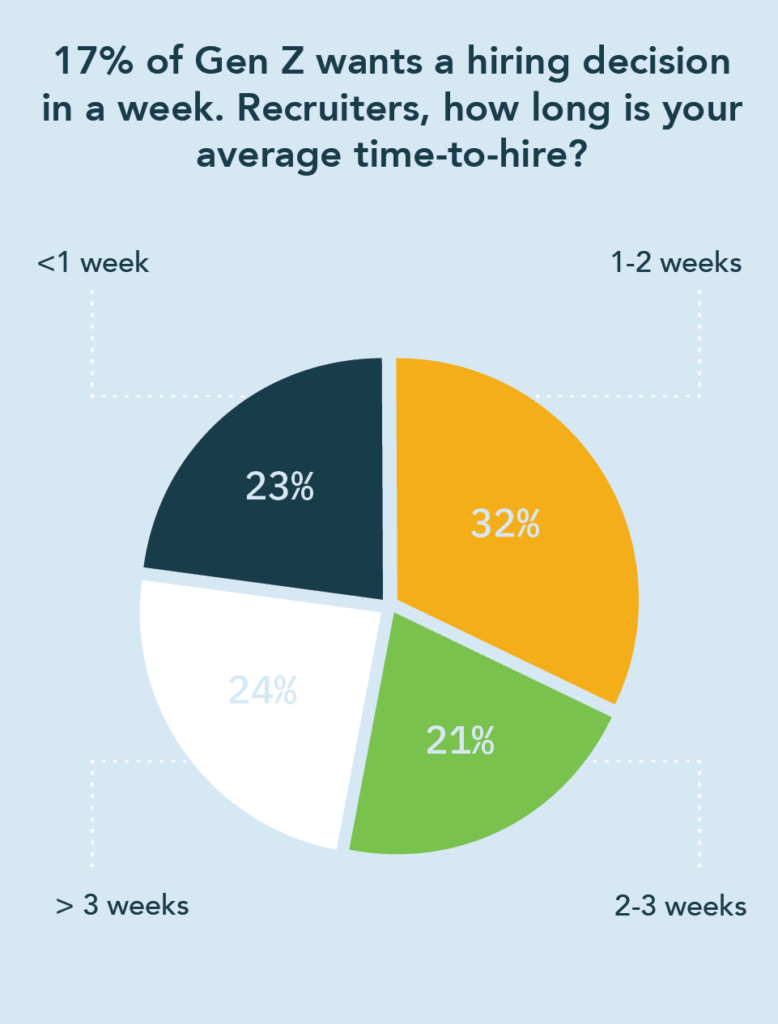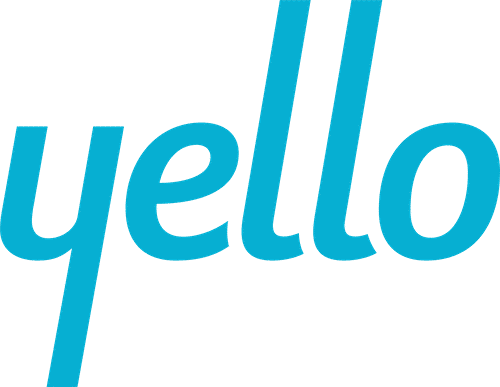Buckle up! Employers are moving at warp speed to win college talent and scoop up top candidates fast. Here’s how to tune up your campus recruiting efforts to reach the finish line first:
- Get to know Generation Z
- Identify gaps in your campus recruiting and hiring processes
- Automate as much of the hiring process as possible
- Measure your efforts
It’s no secret that today’s recruiting landscape is more fast-paced than ever. The labor market is getting tighter, and employers are starting the campus recruitment season even earlier. Young job seekers want the hiring process to move faster than ever — in fact, 17% of Gen Z candidates expect the whole process to take one week or less. And with technology that makes the hiring process quicker — from sourcing candidates to scheduling interviews — the competition is on for recruiters who are vying for the attention of nearly 20 million college students.
Here’s how to speed up your campus recruitment process:
Step One: Get to Know Generation Z
Gen Z is entering the workforce for the first time this year, which means you may need to adjust your recruiting strategy. Put simply, tactics that attracted millennial college students may not work with Gen Z. According to the 2019 Yello Recruiting Study, Gen Z has a unique set of expectations for their relationship with their recruiter, increased engagement throughout the hiring process, and job tenure once they’ve started with your company.[vc_column_text el_class=”border–green”]Here’s a glimpse:
- Nearly one in five Gen Zers expect a job offer one week from the initial phone screen. The majority expect an offer within two weeks.
- Gen Z has no patience for outdated recruiting technology. 46% have applied for a job on their mobile device, and 54% won’t complete an application if your recruiting methods are outdated.
- Gen Zers value face-to-face relationships and meaningful work: they rank their relationship with their recruiter as having the highest impact on their decision to accept a job.
- Gen Z expects to job hop more than their millennial and Gen X counterparts: 55% plan to work for their current employer for less than three years.
Just as your company’s sales and marketing teams take time to get to know customers, HR and recruiting teams should know what makes the workforce’s youngest job seekers tick.
Step Two: Identify Gaps in Your Campus Recruiting & Hiring Processes
Start with data. Do you know how long each step of your hiring process takes on average? Map out the whole candidate lifecycle, from new position openings to offer and acceptance. Identify the schools from which you’ve hired the most candidates. Measure which recruitment channels and events have been most (and least) effective for your organization.
For deeper insights, ask talent acquisition team members, hiring managers and recent hires for feedback on recruiting and hiring. Consider having non-HR staff complete your online application process and provide feedback. Gather information quickly with online surveys and virtual focus groups.
Then prioritize. What activities are not adding value and costing you candidates? (For example, if it takes five days to schedule interviews, it’s time to look at interview scheduling software. Are there any quick fixes? What may require more resources and effort but have the greatest ROI?

Source: Twitter Poll, July 2019
Step Three: Automate as Much of the Hiring Process as Possible
Once you know the areas of your hiring process that take up the most time, automate as much as possible. Here are a few ways technology can help speed up your recruiting process:
- Source potential candidates and invite them to the recruiting events you’re attending.
- Enable career fair attendees to check-in and upload resumes digitally.
- Use mobile devices to evaluate candidates on the spot during recruiting events.
- Invite candidates to complete pre-recorded video interviews at their convenience.
- Build talent communities and keep passive talent engaged with targeted with emails and text messaging.
- Measure and track ROI, productivity and more.
Step Four: Measure Your Efforts
Once you’ve identified and automated as many parts of your hiring process as possible, take time to measure the impact of your efforts. Has your time-to-hire decreased? What about cost-per-hire?
Taking a data-driven approach to your recruiting strategy will ensure you’re making informed decisions and will help you identify where to focus next. Continue to improve the slowest areas in your hiring process and keep an eye on the metrics to track your progress.



